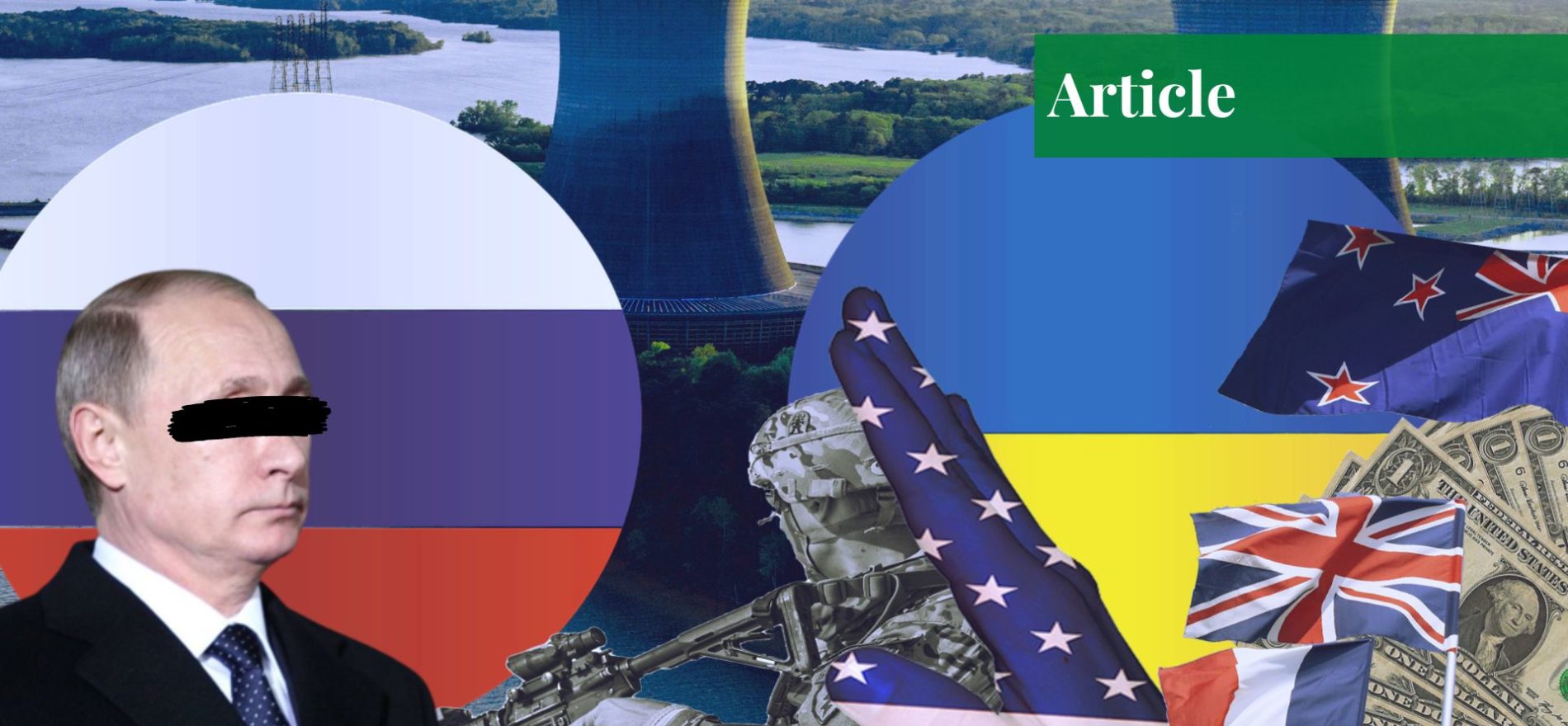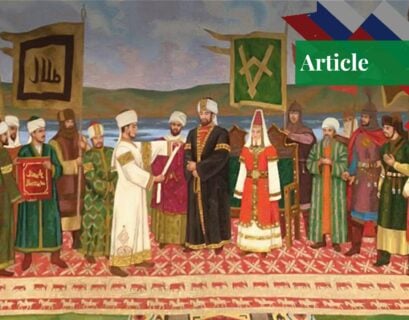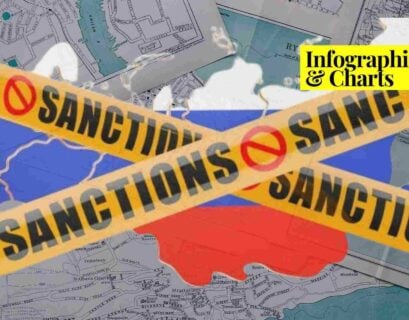Aamina Ikram is currently pursuing her degree in international relations from International Islamic University. Her areas of interest lie include Middle Eastern politics and espionage operations.
A Bird’s Eye View
Ukraine celebrated its independence day on 25 August 2022, which also marked six months since the Russian full-scale invasion of Ukraine. The outgoing British prime minister, Boris Johnson, and Portugal’s Foreign Minister Joao Gomes Cravinho sparked activity in the capital Kyiv on independence day with their high-profile visits. Meanwhile, the Russo-Ukrainian war grinds on with no breakthrough expected in an atmosphere of military attacks, stiff defense, and counter-attacks from both players.
Putin has initiated a new “discourse” calling his invasion of Ukraine a “full-scale military operation” for the liberation of Russians; a gambit played that aligns with his USSR ideology. The monthly cost of defense being borne by Ukraine is $5bn, and the reason it is standing as a solid rock against the world’s second strongest military (as per the Global Fire Power ranking) can be credited to the financial and military aid it’s receiving from the western bloc.
The Kyiv School of Economics has estimated $113.5 billion in damage to Ukraine; with housing and infrastructure being hit particularly hard. The country will need upwards of $200 billion to recover. A recent controversy over Zaporizhzhia nuclear plant has raised concerns among the international community over a likely radiation disaster.
The International Atomic Energy Agency (IAEA) has called for establishing a “security zone” around the Zaporizhzhia plant as both combatants accuse each other of shelling its facility. The news of the last Soviet Union leader Mikhail Gorbachev’s demise during this turmoil also made headlines.
The prices of raw materials and food have soared as a ripple effect of the situation in Ukraine and are predicted to increase the number of undernourished people between 7.6 million and 13.1 million globally, as per an FAO (the Food and Agricultural Organization) report. The sweeping financial sanctions on Russia from the US, G7, and the European Union, haven’t yet pressured it to divagate or step down, which has raised many questions.
Will Putin succeed in erasing the modern state of Ukraine? Can global inflation be overcome, given the huge dependence on Russia for oil and gas energy?
6 Months of the War in Numbers: Casualties, Refugees, & Displacement
The United Nations refugee agency, UNHCR, has an estimation of 6.7 million refugees who got dispersed across Europe, with Poland harboring the largest share. The Russo-Ukrainian war has led to Europe’s largest refugee crisis since World War II, forcing 13 million people to leave their homes. Ukrainians have been granted an automatic right to stay and work in the 27 member states of the European Union for up to three years.
As of 4th September 2022, 5,718 civilian deaths with 8,199 injured were recorded, as verified by the Office of the United Nations High Commissioner for Human Rights (OHCHR). The exact figures of military personnel loss on both sides are hard to come by since each country tries to hide its casualties. The head of the Ukrainian armed forces says that they have lost 9,000 service members, while the Russian authorities have yet to give an official statement.
Areas under Russian Control in Ukraine
President Volodymyr Zelensky has claimed to occupy 20% of the country (about 47,000 square miles), expanding its territory in Ukraine almost threefold, including the Crimean peninsula – annexed by Russia in 2014. Ukraine continues to stall Russian advances using weapons supplied by the west, and on top of this list is High Mobility Artillery Rocket Systems (HIMARS), provided by the US, which can strike farther behind the Russian lines.

Given Ukraine’s independence day, the US has announced a new $3bn military aid package to Ukraine, which includes artillery, radar equipment, and counter-drone defenses. If it wasn’t for the continuous western support, Ukraine couldn’t have stood against Russia’s military strength, and the quality of armory is always a significant factor in war. The International Institute for Strategic Studies (IISS) has published a report, “The Military Balance,” which also depicts a massive gap between the military strengths of Ukraine and Russia, the latter having a more significant edge over the former.
Russian troops are proceeding in the eastern side of Donetsk after gaining complete control of the Luhansk area—Russian-backed separatists held both parts of the Donbas region before the Russia-Ukraine war. In the south, Ukraine has started a counter-offensive in the Kherson region, claiming to have broken through Russia’s first line of defense.
The counterattack has been declared the third strategic phase of the Russo-Ukrainian war by analysts, wherein Ukraine aimed at retaking the entirety of Russian-occupied territory within the Kherson, Zaporizhzhia, and Mykolaiv oblasts. It is Kyiv’s most ambitious move after expelling Russian forces from the capital earlier this year.
General Dominique Trinquand, former head of the French military mission to the UN, says that Ukraine can take control of the Kherson region before winter, and it would be a major coup. Given his statement, it would be very damaging for President Putin. While the on-ground mapping portrays a different picture as Russia continues to win the military and economic war against Ukraine, dumbfounding the world with its incessant progress.
Zaporizhzhia Nuclear Power Station Conundrum
Europe’s largest nuclear power plant in southeastern Ukraine (which generated 20% of Ukraine’s electricity before the war) is currently under the control of Russian forces while still being operated by the Ukrainian staff. It has become a frontline region since Putin’s war on Ukraine began and was caught in crossfire recently. Kyiv and Moscow continued to trade accusations for the artillery shells and grad rockets that hit the cities of Nikopol and Marhanets – six miles from the plant and across the Dnieper River.
Zaporizhzhia nuclear plant has four 750 kilovolt lines supplying it with electricity; three were destroyed earlier in the Russo-Ukrainian war, but the situation became problematic when the last active power line was severed due to a fire caught on the site. The operations at the plant have wholly halted as the previous reactor became disconnected from the power grid.

The UN nuclear watchdog has sent an inspection team to check the on-ground situation of the Zaporizhzhia nuclear plant amid the recent fighting in its vicinity. The chief of the UN atomic watchdog calls it “playing with the fire” and warns of the nuclear accident risks if the shelling doesn’t halt. UN Secretary-General Antonio Guterres has demanded that Russia and Ukraine agree on forming a “demilitarized perimeter” around the plant and suspend all military activity.
Ukraine Crisis and its Effect on Global Economic Activity
Following the Russian invasion of Ukraine in late February 2022, financial markets have become volatile due to increased economic insecurity and commodity prices, cascading risks to the already down resource market. The Organization for Economic Co-operation and Development says that the world will pay a “hefty price for the war in Ukraine encompassing weaker growth, more substantial inflation, and potentially long-lasting damage to supply chains.”
Russia’s blockade of Ukrainian Black Sea ports has raised fears of a further food shortage and economic insecurity, specifically in the Middle East and Africa. However, the recent departure of 18 ships carrying loads of corn, wheat, and sunflower oil from Ukraine (one of the breadbaskets) under the agreement hammered out by Russia, Ukraine, Turkey, and the US can be seen as a silver lining.
The West is relying on economic warfare to punish Russia for its ongoing aggression in Ukraine; 18 countries along with European Union member states have levied individual sanctions against it in the past six months. Since the Russo-Ukrainian war began, Russia has stopped using its $630 bn of foreign currency reserves, making it hard to repay its international loans. The US has put an embargo on oil and gas imports from Russia, and Germany froze the plans for opening the Nord Stream 2 gas pipeline.
The sanctions, however, had a limited effect on Russian gas and energy supplies; it turned to Asia and saw a rise of 55% in annual oil exports and took the 11th spot among the top-performing economies (as per the World Bank). Compared to Russia, the war had staggering impacts on the economic growth of Ukraine, which is predicted to shrink by 45% at the end of this year. The spillovers from the war in Ukraine have further shocked the world economy already weakened by the pandemic.
Low-income economies are most vulnerable and paying the price of a war they didn’t wage. IMF’s Global Economic Outlook report has projected a decline in economic growth from an estimated 6.1 percent in 2021 to 3.6 percent in 2022 and 2023. Considering the contemporary geopolitical tensions, the future seems gloomy, and it isn’t near for the world to come out of this economic fallout.
Inside Johnson’s Visit to Kyiv
Boris Johnson has been a proponent of supporting the “democracy” in Ukraine against its war with Putin’s autocratic regime and was the First World leader to visit it in perilous times. The UK government has sent over $2.71 billion in financial and military aid to Ukraine. UK’s Prime Minister Boris Johnson paid a surprise visit to Ukraine on its independence day, his third and last trip as he stepped down from the British parliament on 7 July 2022.
He met Ukraine’s president Volodymyr Zelensky in Kyiv, extending “unwavering support” in its battle against Putin’s Russia, and was awarded the “Order of Liberty” medal. The UK government also announced to send in mine-hunting vehicles and drones worth $63.5 million along with a military personnel training program which, according to Boris, will have the potential to “change the equation” of the war.
What’s Next?
Nuclear deterrence has hindered the Western powers, especially the US, from indulging in a direct conflict with Russia. The Russo-Ukrainian war is being observed as a “battle between autocracy and democracy,” This cleavage will form a basis on which states will contrive their strategic reasoning policy in the future. “Putinism” is a new ideology being witnessed in the international system, a term coined by Andrey Piontkovsky on 11 January 2000 in Sovetskaya Rossiya.
Russia’s foreign policy under Putin is being devised on the New Euroasia doctrine – imperial aspirations from the past – and he has shown his longing for the former Soviet Union at each step. The possibility of peaceful conflict resolution has become meager after Russia ruled out the option for diplomatic contacts, officially announced by Moscow’s ambassador to the UN, Gennady Gatilov.
Ukraine is a weak state which hasn’t secured European Union membership yet, and since great powers will never throw themselves into the war zone, chances are for the autocracy to prevail. However, as the Russo-Ukrainian war lingers with no end in sight, many experts predict World War III.
If you want to submit your articles and/or research papers, please check the Submissions page.
The views and opinions expressed in this article/paper are the author’s own and do not necessarily reflect the editorial position of Paradigm Shift.


















